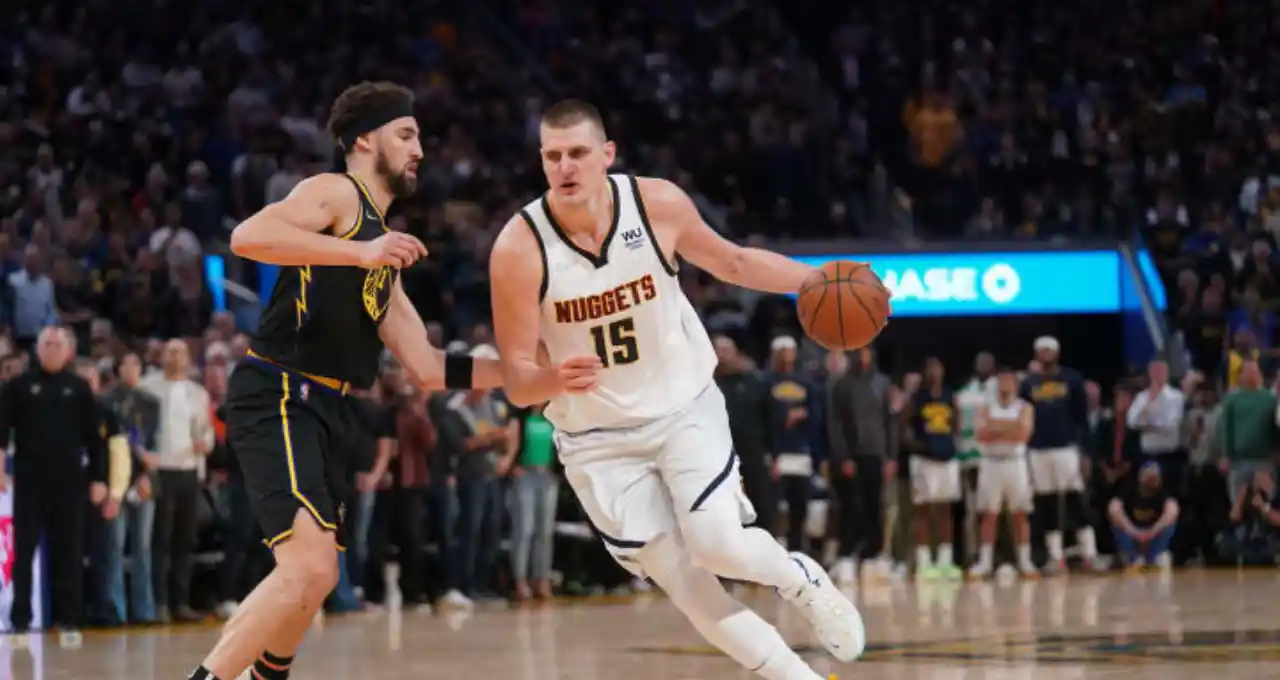Basketball rankings have usually played a massive role in the sport, shaping the futures of younger athletes. The ratings not handiest spotlight the pinnacle talent but additionally manual college scouts and professional groups in their recruitment method. With the rise in reputation of excessive school basketball, the focus on younger instructions has intensified, making scores even greater essential.
But what makes the Class of 2028 stand out? This group of younger athletes has already begun to make waves within the basketball network. The Class of 2028 is being carefully observed by means of coaches, scouts, and fanatics because of their exceptional performances and fast skill improvement. This article explores the nuances of basketball scores, the criteria which might be implemented, and the motives that the Class of 2028 is creating this type of stir.
What is Basketball Rankings
Basketball rankings are a gadget used to assess and rank players primarily based on their overall performance, competencies, and ability. These scores are typically up to date regularly and offer a snapshot of where a player stands in comparison to their peers. Rankings are vital for gamers as they could substantially effect their opportunities for college scholarships and expert careers.
The Criteria Used for Rankings
Rankings aren’t pretty much scoring points; they embody a huge range of things. In addition to a participant’s basketball IQ, teamwork, and management competencies, scouts and evaluators take into account physical traits which include peak, athleticism, and wingspan. A participant’s performance in video games, competitions, and camps, at the side of their ability for development, also are important factors in figuring out their rating.
How Rankings Impact Players’ Future Opportunities
A high ranking can open doors to basketball rankings, scholarships, or even early recruitment through colleges. For a few gamers, it may be a pathway to the NBA. However, a low rating would not imply the end of the street. Many players have used decrease rankings as motivation to improve and in the long run succeed at better stages.
The Class of 2028: A Glimpse into the Future
Rising Stars to Watch
The Class of 2028 is full of young expertise displaying monstrous promise. Players on this magnificence are already making headlines with their performances in middle college tournaments and AAU circuits. Their abilities, mixed with a deep knowledge of the game at this kind of younger age, are setting them apart from their peers.
Notable Achievements and Milestones
Some players on this elegance have already achieved wonderful milestones, consisting of main their teams to championships or being named MVPs in essential tournaments. These achievements aren’t most effective brilliant however additionally a testament to their dedication and hard work.
How Early Talent is Identified and Nurtured
Identifying skills at a young age is essential for long-term achievement. Scouts, coaches, or even mother and father play a vast position in nurturing this expertise. Specialized schooling applications, non-public coaching, and participation in aggressive leagues are some of the approaches young players within the Class of 2028 are being advanced.
Top Players in the Class of 2028
Player 1: [Name]
Background and Early Career
Player 1 has been at the radar of scouts considering the fact that they first started out playing in prepared leagues. With a robust family history in sports, it’s no marvel that they excel in basketball.
Strengths and Skills
Player 1 is known for their wonderful ball-handling abilities and court imaginative and prescient. Their capability to examine the game and make short choices sets them other than others in their age group.
Future Potential
With endured improvement, Player 1 has the capability to come to be a pinnacle prospect for university recruitment and in all likelihood make it to the expert stage.
Player 2: [Name]
Background and Early Career
Player 2 started out playing basketball at a very young age and speedy became regarded for his or her scoring capacity. Their work ethic and backbone are unequalled.
Strengths and Skills
Player 2 excels in capturing and has a knack for finding open areas on the court. Their defensive competencies are also top-notch, making them a well-rounded participant.
Future Potential
If Player 2 keeps on their contemporary trajectory, they may be one of the top players inside the country by the point they attain high school.
Player 3: [Name]
Background and Early Career
Player three comes from a own family of athletes and has been playing basketball seeing that they may stroll. Their herbal athleticism and ardour for the sport have helped them stand out early.
Strengths and Skills
Player three’s speed and agility are their largest property. They can outrun maximum fighters and feature a sharp capturing touch that makes them a consistent danger on offense.
Future Potential
With proper steering and schooling, Player three may want to become a pacesetter of their class and have a good sized effect on the game.
The Role of AAU and High School Programs
The Impact of AAU Basketball on Rankings
AAU (Amateur Athletic Union) basketball is a crucial platform for young gamers to exhibit their competencies. Many pinnacle-ranked gamers inside the Class of 2028 have participated in AAU tournaments, wherein they compete towards the great of the excellent. These performances are closely watched by way of scouts and heavily have an impact on rankings.
How High School Coaches Shape Future Stars
High college coaches play a important function in the development of younger players. They not most effective educate the fundamentals of the game but also instill discipline, teamwork, and a aggressive spirit. The guidance and mentorship supplied by those coaches can drastically effect a player’s ranking and destiny achievement.
Scouting and Evaluation Process
The Role of Scouts in Ranking Players
Scouts are the eyes and ears of the basketball international, continuously searching for emerging expertise. They attend video games, watch hours of photos, and examine gamers’ performances to decide their ratings. Their evaluations are vital in growing an accurate and fair ranking machine.
Key Metrics and Techniques Used in Evaluation
Scouts use lots of metrics to assess gamers, inclusive of factors per recreation, taking pictures percentage, help-to-turnover ratio, and shielding stats. They additionally consider intangible elements inclusive of a participant’s management qualities, paintings ethic, and capacity to perform beneath pressure.
How Social Media Platforms Highlight Young Talent
Social media structures like Instagram, Twitter, and YouTube have revolutionized how young athletes are located and promoted. Highlights from games, training periods, or even personal moments are shared widely, giving players in the Class of 2028 unparalleled exposure. This visibility can boost a participant’s ranking as more coaches, scouts, and fanatics end up aware about their abilties.
The Role of Exposure in a Player’s Development
Increased exposure can substantially impact a young athlete’s development. It affords possibilities for networking, attracts sponsorships, and frequently results in invites to elite camps and tournaments. However, with this publicity comes strain, and how a participant handles it may affect their growth and destiny prospects.
Challenges and Criticisms of Early Rankings
The Pressure on Young Athletes
While being ranked highly may be a source of pride, it also brings enormous pressure. Young athletes are often predicted to stay as much as their rankings, that may result in pressure and burnout. The cognizance on rankings at an early age can every so often overshadow the significance of taking part in the sport and developing naturally.
Are Rankings Always Accurate?
Rankings aren’t usually a perfect mirrored image of a participant’s abilities or capacity. Factors such as injuries, group dynamics, and even bias in opinions can affect rankings. Some gamers may be overlooked definitely because they are past due bloomers or haven’t had the equal stage of exposure as others.
The Debate on Ranking Youth Players
There is ongoing debate in the sports activities network about the ethics of ranking youngsters players. Critics argue that it could result in undue stress and unrealistic expectations, at the same time as proponents accept as true with it presents valuable reputation and motivation. It’s essential to strike a balance between celebrating younger talent and ensuring their properly-being.
Success Stories from Past Classes
Lessons Learned from Previous Top-Ranked Players
Looking at past classes, there are numerous achievement tales in which pinnacle-ranked gamers went on to attain first-rate matters in university basketball and the NBA. However, there are also instances in which tremendously-ranked players didn’t live up to expectations because of different factors like injuries, lack of improvement, or personal challenges. These testimonies offer precious classes for modern and destiny gamers.
How Rankings Have Shaped the Careers of NBA Stars
Many NBA stars have been as soon as top-ranked players in their adolescents. Their early popularity helped them steady scholarships to pinnacle university applications and, finally, professional contracts. These scores gave them the platform to show off their skills on a larger degree, setting the foundation for his or her a hit careers.
How Parents and Coaches Can Support Young Athletes
Encouraging a Balanced Approach to Sports and Education
Parents and coaches play a crucial role in ensuring young athletes preserve a healthy balance between sports and schooling. Encouraging instructional excellence along athletic development can assist players avoid the pitfalls of placing all their attention on basketball. Education gives a protection net and broadens their horizons beyond the courtroom.
The Importance of Mental Health and Well-being
The intellectual health of young athletes is just as essential as their physical health. The pressure to carry out, coupled with the needs of training and opposition, can take a toll on their intellectual properly-being. Parents and coaches ought to prioritize open communique, provide help, and make sure that young athletes have the sources they want to manage strain efficaciously.
What to Expect in the Coming Years
Predictions for the Class of 2028
As the Class of 2028 progresses thru center school and into excessive school, we will count on to look some standout gamers rise to country wide prominence. The mixture of expertise, education, and exposure will likely cause numerous individuals of this elegance being noticeably favorite by way of pinnacle high college applications, college scouts, and even international groups.
Potential Game-Changers and Industry Shifts
The basketball industry is continuously evolving, and the following few years ought to carry tremendous modifications in how young expertise is scouted, ranked, and advanced. Innovations in generation, analytics, and education methods ought to similarly refine the ranking method, making it greater accurate and comprehensive. Additionally, the increasing affect of social media and global scouting networks may additionally open up new opportunities for players in the Class of 2028.
Conclusion
The Class of 2028 is poised to make a tremendous impact on the sector of basketball. With a completely unique combination of talent, dedication, and opportunity, these young athletes are at the cusp of greatness. While rankings provide a beneficial measure in their present day standing, it’s vital to recall that they may be just one piece of the puzzle. As those gamers keep to increase, they may have the threat to shape their very own destinies, each on and rancid the court docket.
Basketball scores are a effective device that may have an impact on a player’s destiny, but they’re now not the best component. The help of circle of relatives, coaches, and mentors, together with a dedication to non-stop development, may be key to their long-term success. As we watch the Class of 2028 evolve, one thing is sure: the destiny of basketball is vibrant.
FAQs
What are the key factors in basketball player rankings?
Key elements include physical attributes, basketball abilities, recreation overall performance, and capability for increase. Scouts additionally keep in mind intangibles like leadership, work ethic, and mental longevity.
How often are basketball rankings updated?
Basketball rankings are generally updated numerous instances a yr, regularly after primary tournaments or at the give up of the basketball season. The frequency can vary depending on the ranking machine.
Can a player improve their ranking, and how?
Yes, a participant can enhance their ranking by way of always performing nicely in video games, showing development of their abilities, and gaining publicity thru camps, tournaments, and social media.
Are early rankings a reliable indicator of future success?
Early rankings can be a hallmark of capability, however they’re no longer usually reliable predictors of destiny achievement. Many factors, such as development, accidents, and private growth, can influence a participant’s profession trajectory.
What role do parents play in their child’s basketball career?
Parents play a important function in supplying support, making sure a balanced method to sports and schooling, and supporting their baby navigate the pressures of competitive basketball. Their encouragement and steering can notably impact their toddler’s development and success.




